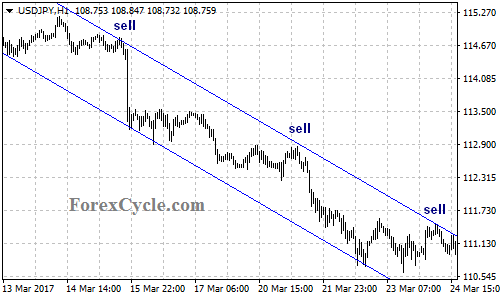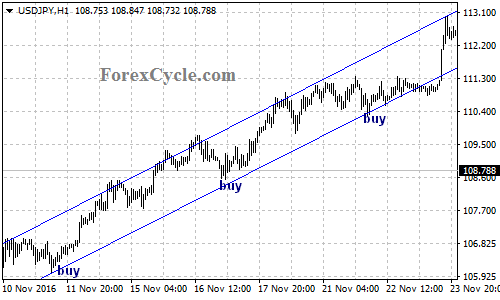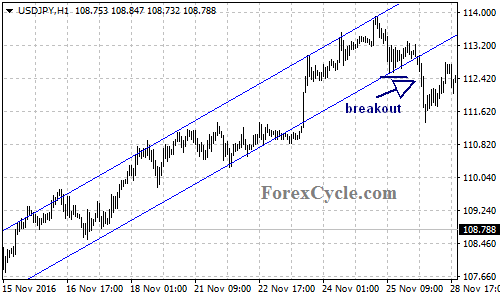The term ‘price channel’ refers to a special graphical tool used by Forex traders to make buying and selling decisions. On the one hand, it is quite a complex tool, because the data it provides is influenced by a huge variety of factors. However, what makes price channels so useful is that they condense these variables into a simple visual representation.
The price movements of a currency pair are plotted within two parallel lines. These lines represent the various up and down forces which affect price. The top line signifies resistance (downward pressure). When the price approaches it, most Forex traders try to sell before the support line is hit and value is lost.

Conversely, the bottom line signifies support (upward pressure) and it works in the opposite way. If you are learning to trade with price channel, you should know that approaching the support indicates a good time to buy. Similarly, the idea is that traders try to buy at the right time before the resistance line is hit and the value stops climbing.

So, it is all about that space between the two parallel lines. The size of the space (or channel) is determined by the amount of price activity. If there is a lot of fast paced change within the market, the channel will be larger. If prices are moving slowly and there is no reason to expect rapid fluctuations, the channel is narrow. Price channels can point upwards, downwards, or remain horizontal.
After a time, the direction of every channel changes. In some instances, this triggers a neutral period in which price activity remains fairly consistent. However, it may also change direction as the result of a channel breakout and this occurs more abruptly. Breakouts are defined by a sharp upward or downward trend which moves beyond the top or bottom line and closes strongly afterwards.

When this happens, price activity is no longer limited by the original channel. For example, if the price drops below the bottom line (and ‘breaks out’), it indicates that the bearish forces are powerful enough to disrupt the previously bullish tendency. After which, the bullish channel is replaced by a new bearish one. Skilled traders can use channel breakouts to predict and prepare for trend reversals.
Trade with Price Channel in Five Simple Steps
Step One: Pick Your Trading Conditions
It doesn’t matter what direction your currency pair is trading in, because you can use a price channel to plot both downward and upward trends. It will also represent neutral movements (no significant price changes). This tool is compatible with all timeframes and can be used in conjunction with five, ten, and thirty minute charts as well as day charts too.
Step Two: Open Your Forex Trading Account
Open up your online Forex account or the Forex tracking software that you prefer to use. Launch a chart for the chosen currency pair (the euro and the yuan, for example) and select the desired time conditions. Navigate to the technical indicator list and hit the PRICE CHANNEL button. This will enable you to set the support and resistance lines.
Step Three: Create the Price Channel
Plot where you want the bottom line (support) to start and end. The system should automatically fill in the gap and establish the connection. Repeat the process for the top (resistance) line. The resulting price channel should now be contained within two parallel lines and contain most of the price activity.
Step Four: Analyse the Price Channel
The next step is to study the channel to determine whether it is a good time to buy or sell. Channels which point upwards are indicative of ‘rising’ or ‘bull’ tendencies. They are characterised by greater low and high points. Conversely, channels which points downwards signify a ‘falling’ or ‘bear’ trend. They are defined by smaller lows and highs. Horizontal channels are neutral and represent completion of a bull or bear phase.
Step Five: Identify Your Next Move
If the currency prices are contained within an upwards pointing channel (ascending), buy the currency pair just before the price hits the bottom (support) line. However, if the prices are contained within a downwards channel, it is a good time to sell the currency pair just before the price hits the top (resistance) line. If the price is range bound, wait until it hits either line to make a decision.
Making Price Channels Work for You
When learning to trade with price channel, don’t get tempted into trading against the trend, particularly if you don’t have much Forex experience. While it is possible to make a big profit, it involves a lot of risk and is generally only used by high level professionals.
You should take care when analysing the activity within channels. They can be more complex than they first appear, because there are often internal variations within the main channel. To make the safest trading decisions, you need to consider all of the available information.
This includes data from external sources like newspapers and expert forecasts. Forex trading is a dynamic and fast paced world. Trends can develop and disappear within weeks, so careful and consistent monitoring is essential. Use price channels as a supplementary tool.

